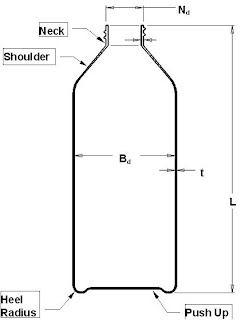Intrinsic viscosity, I.V
 Terms, allegiances, connecting molecular weight (or range) and viscosity will be explained for polyethylene terephthalate, PET and how it influences applications and processing.
Terms, allegiances, connecting molecular weight (or range) and viscosity will be explained for polyethylene terephthalate, PET and how it influences applications and processing.Intrinsic viscosity, I.V we measure by measuring viscosity of solvent and polymer solution solved in it.
How to interpreted I.V? Molecular weight grow means longer polymer chains consistence intrinsic viscosity, I.V grow, forward, e.g. stiffness grow. I.V determinates PET resin application, for I.V:
• 0,40-0,60 dl/g fiber
• 0,76-0,84 dl/g bottles
• 0,85-1,05 dl/g extrusion
As we know the relations we can chose the adequate resin for the application. When we produce bottles in, injection stretch blow molding, ISBM for e.g. water we will chose higher I.V (0.82 – 0.84 dl/g), bottle stiffness will be the most important. For cosmetic packaging, when shapes are more complicated we will chose lower I.V (0.76 – 0.80 dl/g) for better flow properties, which will give better detail mapping.



Comments